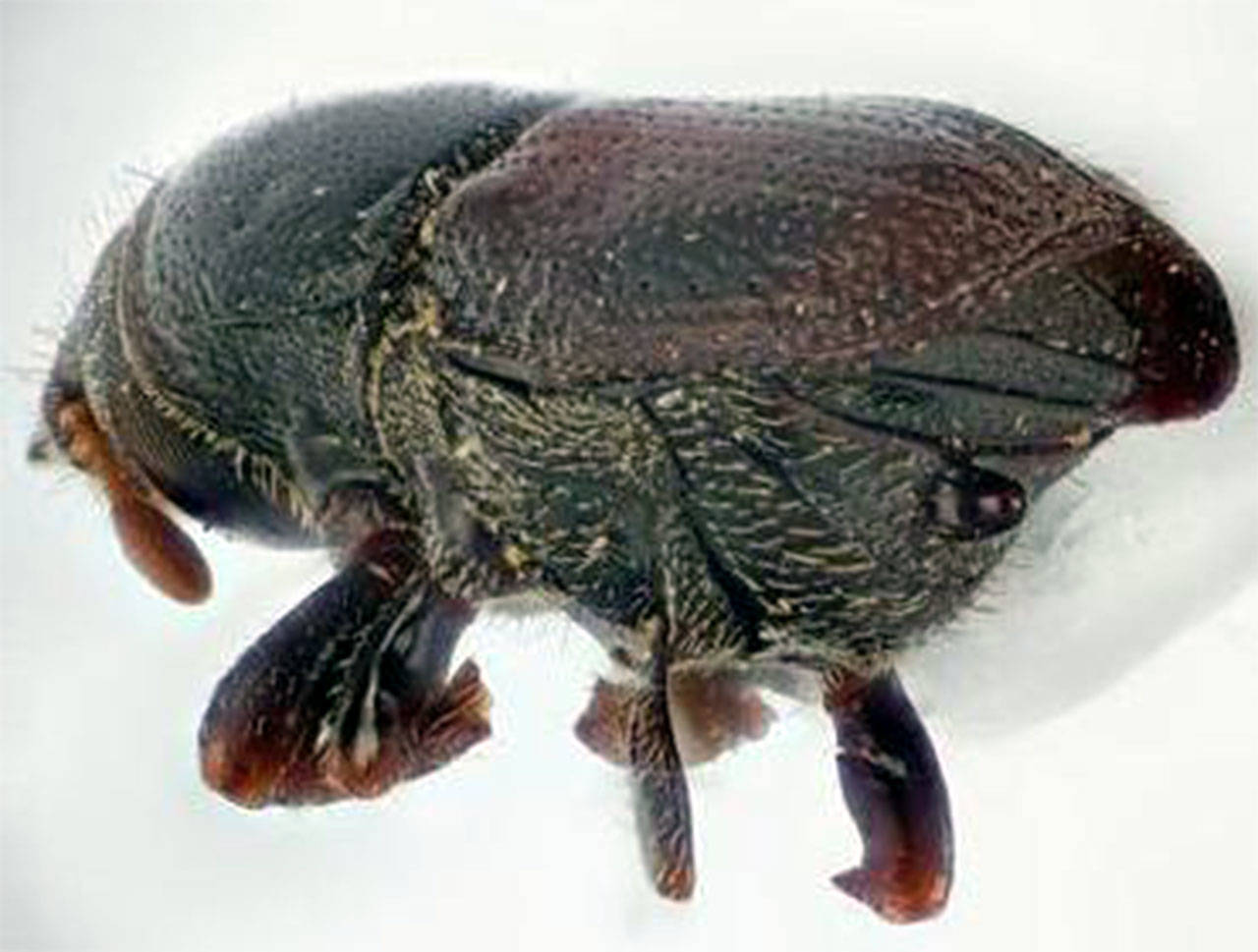By Harry Anderson
The pandemic is getting worse. The death toll here on our Rock is already in the thousands. It’s killing young and old, healthy and sickly alike. A vaccine isn’t even on the horizon, treatments are very expensive and the only known prevention is careful social distancing.
No, it’s not Covid-19. I’m referring to a different pandemic that’s been going on for at least several years on Whidbey Island and elsewhere in Western Washington, caused by an insidious enemy almost as invisible as a virus. It’s bark beetles infesting and killing our beautiful coniferous evergreen trees.
While I’m hunkering down at home to ward off Covid-19 and with time on my hands, I’ve studied up on bark beetles, spurred on after three mature grand firs on my property died in the last year and two more are on their way out. I have conferred (maybe that should be “con-firred”) with experts who specialize in tree biology and forest insects. We are fortunate to have some very smart people near us who know a lot about such things.
Bark beetles are very small – little more than an eighth of an inch when fully mature. They are native to our neck of the woods and have been around here longer than we have. Until recently, however, they usually dined on old, dead trees and those that fall over in a storm. They will attack all our evergreens, including hemlocks and cedars, but they particularly like firs. On Whidbey, our grand firs have been attacked even more than
our Douglas firs.
Healthy trees normally use their own pitch as a weapon to expel beetles that bore through their bark. Next time you take a walk in the woods, look for some white pitch lines on healthy trees. You’ll know that those trees have won the battle.
But since about 2012, our Rock and the surrounding areas have suffered through at least five drought summers with higher than normal temperatures and much less rain. (That’s hard to fathom, I realize, as we experienced record rainfall last January and are being soaked in this soggy month of June-uary.)
“This climate change has stressed and weakened our evergreens, caused root disease and other issues,” said Kevin Zobrist, a WSU professor who oversees the university’s extension forestry program in Island, King, Pierce, San Juan, Skagit and Snohomish counties. “The beetles are basically opportunists taking advantage of stressed trees that are already dying.”
The professor gave me a brief lecture on tree biology. The roots gather water that is taken up through the trunk to the branches and needles. Photosynthesis turns it into sugar, or sap, that is then taken back down to feed the roots.
“The beetles bore through the outer bark to reach the inner bark, called the phloem, which is where the sap is transported. They basically eat the food before it can reach the roots and therefore the tree starves.”
Wow. Thousands of trees starving to death, right here on our beautiful, abundant Rock – and not a thing any generous food pantry can do about it.
Part of the problem is you often won’t know your trees are sick until they’re dead. Drive around our Rock and you are sure to see some dead firs with bright red needles and
lots of bare branches. All the trees around them may still look fine – but could already be infested with beetles.
“That’s the challenge,” said Glenn Kohler, the forest entomologist (bug expert) with the Washington Department of Natural Resources. “The stress of higher temperatures and reduced water is luring the beetles to these weakened trees, and by the time you discover it your tree is likely already dead.”
So what’s a hunkered-down tree owner already worried about another pandemic to do? The experts say the first thing is not to panic. Although you may lose a few trees on your property, you are very unlikely to lose them all. Beetles are finicky eaters and don’t like the taste of every tree in the forest. Once they’ve killed a tree or two, they usually move on to find something new and tastier.
There is a treatment that can kill the beetles if the infestation is caught early. But it’s expensive, requires regular injections and really makes sense only for a very special tree you feel must be saved.
The best prevention, Kohler and Zobrist both said, is to clear out vegetation, especially grass, growing under the trees and thin the grove so that the healthier trees have a chance to grow. “Eliminate the competition for water and sunlight. Give them room to build up their strength and then they are able to kick out the beetles before they get very far.”
In other words, our stressed out trees need social distancing in this time of their pandemic, just as much as we do in ours.
• Harry Anderson is a retired journalist living on Central Whidbey.


